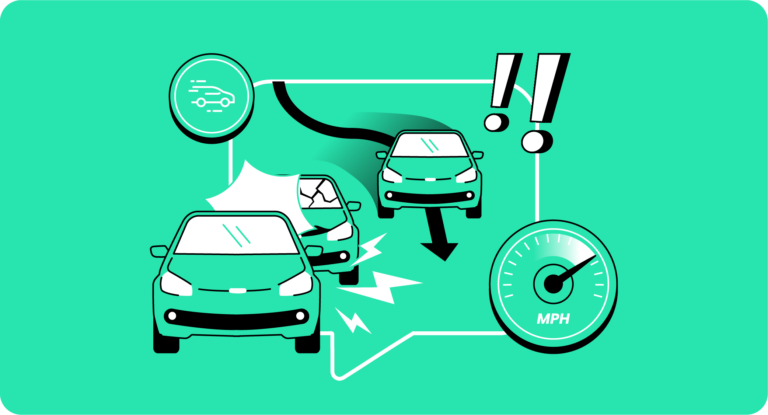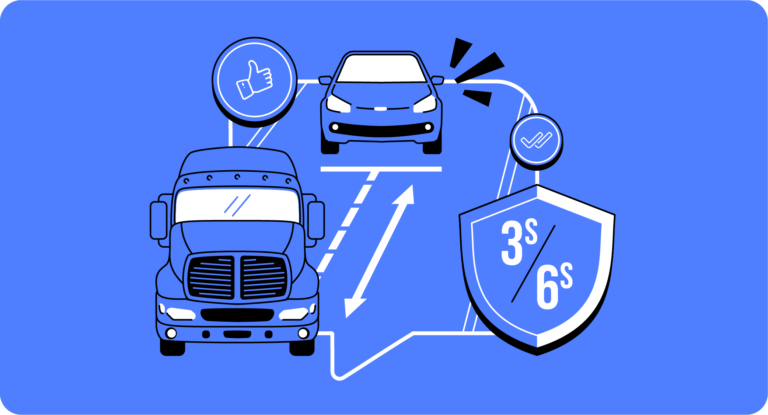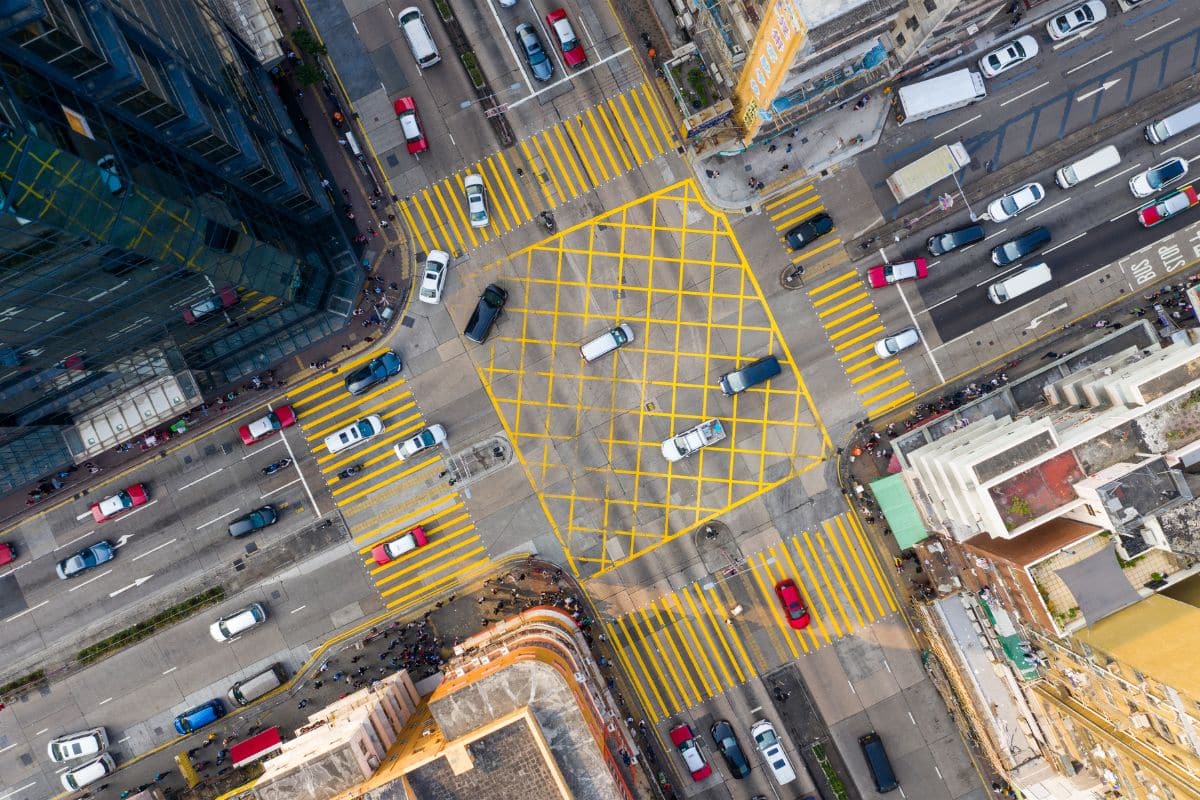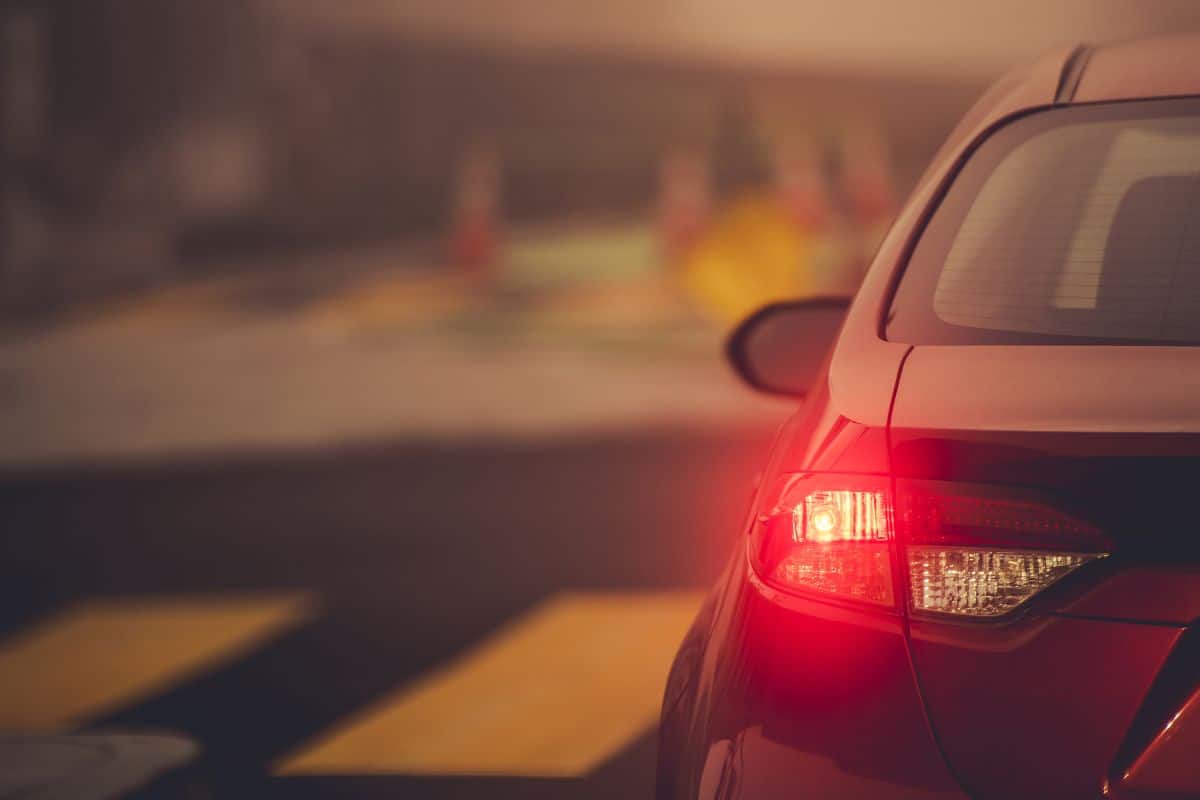In certain situations, speeding up can help you avoid serious collisions. Accelerating to create space or clear an intersection can reduce the risk of rear-end crashes or side-impact car accidents. However, knowing when and how to speed up safely is essential to protecting yourself and other drivers on the road.
How Speed Affects Collision Types
Speed plays a critical role in determining the dynamics of a collision, including its severity and the type of accident that occurs. Driving too slowly or too quickly can affect reaction times, stopping distances, and vehicle control, increasing the likelihood of an accident. However, there are scenarios where temporarily increasing speed can reduce the risk of a collision by creating safer distances or avoiding potential hazards.
One of the most common situations where increasing speed can help is when you are being tailgated. Speeding up slightly can create additional distance between your vehicle and the tailgater, reducing the likelihood of a sudden stop leading to a rear-end collision. This maneuver should be done cautiously and only when road and traffic conditions allow.
Common Accidents That Can Be Avoided by Speeding Up
Speeding up temporarily in certain situations can help avoid accidents by creating safe distances or preventing hazardous situations. Below are examples of how accelerating appropriately can reduce the risk of specific types of collisions:
- Rear-end collisions – Speeding up when being tailgated creates distance and reduces sudden braking risks. Tailgaters often follow too closely, and increasing speed briefly can help maintain a safe buffer.
- Side-impact collisions – Accelerating through intersections can avoid cars running red lights or failing to yield. Moving through the intersection quickly reduces your exposure to oncoming vehicles.
- Merge accidents – Speeding up while merging onto highways prevents slow lane changes from causing crashes. Maintaining a steady and sufficient speed ensures smoother transitions into traffic.
- Collisions with large vehicles – Avoid being in a truck’s blind spot by speeding up to pass safely. Remaining in blind spots increases the risk of being sideswiped or pushed off the road.
- Intersection crashes – If another driver hesitates or stops suddenly at an intersection, increasing speed may help you clear the area safely. This can reduce the chances of being struck from the side.
- Highway lane change accidents – Accelerating to match the speed of highway traffic can prevent collisions when merging into faster-moving lanes. This is especially important during rush hour or in congested traffic.
- Crosswalk accidents – Speeding up cautiously through crosswalks, when no pedestrians are present, may reduce the risk of being rear-ended by impatient drivers. However, always prioritize pedestrian safety.
- Overtaking slow-moving vehicles – Temporarily increasing speed can help you pass slow drivers on highways or rural roads, reducing the risk of prolonged exposure to unsafe driving conditions.
Pro Tip
Be sure of your surroundings, both in front, behind, and to your sides before accelerating. Your situational awareness is essential when speeding up to avoid dangerous situations.
When Speeding Up Is Unsafe
While speeding up can help prevent certain collisions, there are scenarios where it increases risks instead of reducing them. Accelerating beyond safe speeds can cause drivers to lose control, misjudge distances, or fail to react to sudden hazards. Understanding when speeding up is inappropriate is crucial to maintaining safety on the road. Examples of situations where it is unsafe to speed up include:
- Sharp curves – Speeding up on a curve can cause you to lose traction and risk skidding or rolling over.
- Limited visibility – Accelerating in fog, rain, or at night increases the chances of hitting unseen obstacles or vehicles.
- Heavy traffic – Attempting to speed up in congested traffic can lead to rear-end collisions or sudden braking accidents.
Implications of Speeding Under California Vehicle Code § 22350
California Vehicle Code § 22350, known as the “basic speed law,” prohibits driving faster than is safe for current road and traffic conditions. This law emphasizes that drivers must consider weather, visibility, and road hazards when adjusting their speed. Even if you are traveling within the posted speed limit, you can still be cited if your speed is deemed unsafe for the conditions.
Violating CVC § 22350 can result in fines, points on your driving record, and increased liability if the violation leads to an accident. Insurance companies often use evidence of speeding to establish fault in collision claims, making it essential to prioritize safety over speed in all driving scenarios.
Defensive Driving Techniques for Avoiding Collisions
Preventing accidents often requires more than just adjusting your speed. Defensive driving techniques focus on maintaining situational awareness and making proactive decisions to avoid hazards. Below are practical strategies for preventing collisions without relying solely on speed:
- Maintain a safe following distance – Prevent rear-end collisions by keeping 3-4 seconds of space between your vehicle and the one ahead. This buffer allows you to stop safely in case of sudden braking.
- Signal intentions early – Use turn signals and brake lights to communicate your actions to other drivers. Clear communication reduces confusion and minimizes the risk of collisions.
- Monitor blind spots – Check your mirrors and blind spots regularly, especially before changing lanes. Failing to do so can result in sideswipe or merge accidents.
- Anticipate other drivers’ actions – Watch for signs of erratic driving, such as swerving or frequent lane changes, and adjust your position to avoid potential hazards.
- Adjust speed for road conditions – Slow down on wet, icy, or uneven roads to maintain control of your vehicle. Weather-related adjustments can prevent skidding or losing traction.
- Avoid distractions – Activities like texting, eating, or adjusting the radio can divert your attention from the road. Staying focused ensures you can react quickly to sudden changes.
- Use your horn wisely – A brief honk can alert other drivers to your presence in situations like blind turns or merging traffic. Proper horn use helps prevent misunderstandings and potential collisions.
- Stay out of large vehicles’ blind spots – Trucks and buses have extensive no-zones where drivers cannot see smaller vehicles. Position your car so you remain visible to them.
How Speeding Impacts Insurance Claims
Speeding plays a significant role in determining liability during insurance investigations. If a driver is found to have been speeding, they are often deemed partially or fully responsible for the collision. Insurance adjusters review factors like road conditions, posted speed limits, and vehicle positions to assess whether the speeding driver was negligent.
Evidence such as dashcam footage, accident reports, and witness statements can help clarify whether speeding was appropriate or unsafe under the circumstances. For example, dashcam footage may show that a driver was forced to speed up temporarily to avoid a hazard, which could help mitigate fault. Accurate and credible evidence is essential for resolving disputes and supporting your claim.
The Role of Speed in Preventing Tailgating Accidents
Gradually increasing speed when being tailgated can create a safer buffer between your vehicle and the aggressive driver behind you. Tailgating reduces the time and space needed to react to sudden stops, increasing the risk of rear-end collisions. Accelerating slightly, when safe, reduces crash risk and provides an opportunity to change lanes if necessary.
Safe Maneuvers for Handling Aggressive Drivers
When dealing with tailgaters, consider changing lanes or pulling over when it is safe to do so. This allows the aggressive driver to pass without putting yourself or others in danger. Avoid brake-checking or engaging in retaliatory actions, as these behaviors can escalate the situation.
Maintaining a calm demeanor and focusing on creating space ensures your safety and helps prevent further incidents. If the aggressive driver continues to act recklessly, consider noting their license plate and reporting them to law enforcement.
Adjusting Speed in Heavy Traffic
In heavy traffic, speeding up temporarily can help create a smoother flow of vehicles and reduce sudden braking. This strategy is especially effective when merging or avoiding vehicles that are changing lanes without signaling. However, always ensure you are driving at a safe speed for the conditions and leaving enough room to stop if necessary.
Speeding Through Intersections
Accelerating slightly when approaching or moving through an intersection can reduce the time you spend in a vulnerable position. This is particularly important when other drivers may be running red lights or attempting unsafe turns. Always scan the intersection for potential hazards before increasing speed.
Tip
It is not always advised to speed up if you see your light turn yellow. Your own judgment in these situations should determine if you should speed up to get through the intersection before the light turns red. However, if you have enough room to safely stop when you see the light turn yellow, do not speed up as this may result in running a red light.
Speeding to Avoid Blind Spot Collisions
Remaining in another vehicle’s blind spot for too long increases the risk of being sideswiped. Speeding up briefly to pass large vehicles, like trucks or buses, ensures you exit their no-zones quickly and safely. This proactive maneuver minimizes your exposure to blind spot dangers.
Note
Drivers using cruise control may take a relatively long time to pass large commercial vehicles. If you are behind a driver like this, maintain a safe distance relative to the truck and wait till the driver ahead of you has passed the truck so you may pass the truck quickly.
Steps to Take After a Collision Involving Speed
After a collision involving speed, it is essential to take immediate steps to protect your health, rights, and potential claim. Start by contacting law enforcement to report the accident and create an official record. Then, exchange information with other drivers and seek medical attention, even if your injuries seem minor, as some symptoms may develop later.
Key Steps to Take After a Collision
- Take photos of the accident scene and vehicle damage – Documenting the scene ensures you have evidence of the crash, including skid marks, road conditions, and visible damage to vehicles.
- Gather witness contact information – Collect names, phone numbers, and statements from witnesses who saw the collision. Their accounts can support your version of events.
- Obtain a copy of the police report for insurance purposes – Request the accident report from law enforcement to use as evidence when filing a claim or pursuing compensation.
- Exchange information with all involved parties – Share names, insurance details, and contact information with the other drivers, as required under California law.
- Seek medical attention immediately – Even if you feel fine, injuries like whiplash or internal trauma may not appear until hours or days later. A medical evaluation ensures timely treatment and provides documentation for your claim.
- Notify your insurance company – Inform your insurer about the accident and provide them with the necessary details to start your claim.
- Preserve any physical evidence – Keep items such as damaged vehicle parts, torn clothing, or broken belongings as evidence for your case.
- Keep a record of expenses related to the accident – Save receipts for medical bills, repair costs, or other out-of-pocket expenses caused by the collision.
Taking these steps ensures that you have the necessary evidence to support your claim and protect your rights after the accident.
FAQ: Speed and Collision Avoidance
When is it safe to speed up to avoid a collision?
Speeding up may be safe in specific scenarios, such as creating distance from a tailgater or clearing an intersection quickly to avoid a side-impact collision. However, you should only accelerate if road conditions, traffic, and your vehicle’s handling allow for safe maneuvering. Avoid speeding up if doing so would place you or others at risk of losing control or violating traffic laws.
Can speeding to avoid an accident lead to a ticket?
Yes, even if speeding up was an effort to prevent a collision, it may still result in a citation if you violated California Vehicle Code § 22350, the “basic speed law”. This law prohibits driving faster than is safe for current conditions, regardless of the posted speed limit. If you are ticketed in such a scenario, you may need to explain the circumstances to law enforcement or a court to contest the citation.
What should I do if an accident occurs despite defensive driving?
If an accident occurs despite your efforts to avoid it, follow the standard steps after a collision. Contact law enforcement to report the crash, exchange information with other parties, and document the scene with photos and videos. Seeking medical attention immediately and notifying your insurance company will also help you address any injuries or damages effectively.
Get Help After a Collision With Crockett Law Group
Knowing when and how to adjust your speed can help you avoid certain types of collisions, such as rear-end accidents. However, if another driver’s negligence caused your injuries, you have the right to pursue compensation for your damages. Crockett Law Group is here to help you hold the responsible party accountable and secure fair compensation, so contact us to request your free consultation today.










